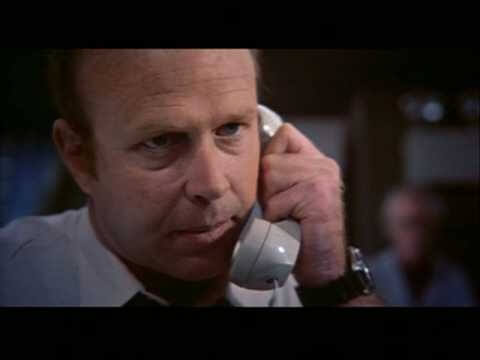Brainstorm turned virtual reality into the orgasm machine that keeps on giving

Watch This offers movie recommendations inspired by new releases or premieres, or occasionally our own inscrutable whims. This week: With Ready Player One still flying the flag for beloved touchstones of the Reagan years, we’re looking back on some unsung gems from the 1980s—the movies from that decade that deserve their own loyal fan followings.
Brainstorm (1983)
Douglas Trumbull is best known as the special-effects guru behind 2001: A Space Odyssey and Blade Runner, but he also followed both films with his own directorial efforts that, in their way, refracted and built upon those more widely acclaimed masterpieces. 1972’s Silent Running transforms Kubrick’s meditation on man, technology, and the cosmos into a more human tale of hubris and environmental catastrophe, and 1983’s Brainstorm grapples with many of Blade Runner’s same concerns about humanity and memory. Trumbull intended it as a showcase for a new technology that would display wider images at 60 frames per second, but logistics forced him to scuttle those ambitions. Instead, the film alternates between 65mm and 35mm film, which, on home screens, means a letterboxed image for the film’s “virtual reality” scenes, and then an even smaller, boxed-in visual plane for the film’s real-world scenes. You’re essentially looking at a small square inside of a big black square for much of the movie.
If the idea was to make VR seem expansive and mind-blowing, the inverse happens here, turning the real world into something disorienting and claustrophobic. But the film still plays nicely with this theme, which may be better suited to our more suspicious time. The story follows Christopher Walken as one of those cocky ’80s scientist visionaries—a Cronenbergian protagonist/catalyst, careening into a post-human future. His team at a vaguely New Age research institute has created a helmet that records not just the sensory details of an experience but its actual emotional content, too. They start off using it to create thrill rides—rollercoasters, waterslides, extreme sports—but it’s not long before some randy engineer takes the thing home and records himself having sex with it, an inevitability that sets off a whole chain of escalating applications. The CEO of the company splices together an endless loop of the orgasm; experiencing that sheer sensory assault almost kills the CEO but also leaves him babbling about some greater transformation the technology might herald. The product, initially engineered for communications and education purposes, quickly draws the attention of the military-industrial complex, shadowy power brokers who seem to be moving swiftly and assertively behind the scenes. And when one of Walken’s partners records her own death with the unit, the film’s central question is proposed: What happens when someone views that?
As provocative as all this is, Trumbull keeps things grounded, interested to an almost baffling degree in the technical and logistical sides of this theoretical technology, as well as the emotional arcs of the humans creating it. Many of the film’s scenes can be mapped directly to the modern VR industry, including specific applications—porn, education, entertainment—and earnest discussions about form factor and user adoption. Part of the fun of watching Brainstorm today is to see Trumbull and his production team envision all of these futurist ideas via analog technology, cutting and splicing tape physically in front of bleating cathode-ray monitors, and hacking corporate buildings using landline-typewriters bulging out of suitcases. Everything is covered in candy-colored wires, an unruliness that pops in the movie’s endless beige expanses of office space. Indeed, while Trumbull finally indulges the viewer with some eye-popping flashes of the afterlife in the film’s final moments, its most lingering images are of the towering, anodyne research complexes in which technology is created. Trumbull’s own films lack the sense of philosophical wonder of his work with the great directors, but there’s something refreshingly mundane about them, envisioning sci-fi wizardry as something real humans must literally construct.
It could’ve used some more techno-hell, though. That’s a lot of viscera for just a few seconds of screen time.
Availability: Brainstorm can be rented or purchased through the major digital services. It can also be obtained on DVD or Blu-ray from Netflix, Amazon, or possibly your local video store/library.